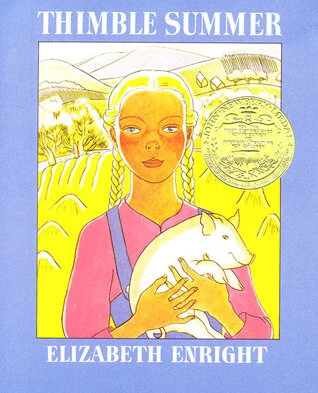The White Stag (1938)
Mulan lied to me. All these years, I’ve been assuming the Huns were…Mongolian? At least East Asian of some sort. Shan Yu, the terrifying beefcake villain of that film, led his horde of Hun soldiers on an assault of Beijing before being blasted into space on a firework. This was 1998, so I was kinda assuming that Disney would’ve done their research. Alas, “Let’s get down to business/to defeat the Xiongnu” doesn’t exactly roll off the tongue. And so the Xiongnu name (which is spelled sort of like Hun in Chinese characters, I guess?) was shortened to “Hun” for the sake of expediency.
But…maybe there is a connection there? There’s a whole Wikipedia article about the origins of the Huns, but after reading through it twice I still don’t know what the hell the connection is. And after reading The White Stag, ostensibly about the actual Huns who invaded the Roman Empire and ended up settling in Hungary (wtf?), I’m even more confused. Thankfully, that confusion only adds to the charm and mystery of The White Stag, a thrilling, hilarious, and stupefying choice for the Newbery Award that just might be the most audacious children’s book I’ve ever read.
Author Kate Seredy knew what she was getting into. In the book’s forward, she offers this invitation to readers/warning to parents:
“Those who want to hear the voice of pagan gods in wind and thunder, who want to see fairies dance in the moonlight, who believe that faith can move mountains, can follow the thread on the pages of this book.”
Three pages later, an old man slaughters his horse to make a blood sacrifice on a pagan altar and brings down a bloody storm of wind and fire from Heaven. This kind of shit woulda scared the crap out of my very Christian mom growing up, but holy hell is it fabulous! What follows is a poetic, surrealistic retelling of the Huns’ migration from the plains of Central Asia to the Carpathian Mountains. It’s an alchemical mix of history, legend, and fiction, and it works beautifully.
Kate Seredy had already received a Newbery Honor for her first book The Good Master, a semi-autobiographical tale of her childhood in Budapest. She draws on her Hungarian roots again for White Stag, but in a questionable way. Back in the 1930s, it was assumed that Hungarians were the modern-day descendants of the Huns. (Am I the only person who never connected that Hungary begins with “Hun”?) Nowadays, it’s debated whether or not they can actually claim that heritage, or whether they descended from a brother tribe, the Magyas. Regardless, it was the history that Seredy was raised with, and in that history she saw an opportunity to educate American readers.
Let’s be straightforward: Attila and the Huns are a weird choice for a children’s book. Referred to as “The Scourge of God”, Attila is most famous for the relentless slaughter of every people group in his wake from the steppe of Eastern Asia to northern Italy. Fear of the Hun army was a likely cause of the Great Migration, which precipitated the fall of the Roman Empire. And the legends about Hun culture are horrifying in the extreme—infanticide, slavery, genocide, etc. The White Stag doesn’t shy away from this; in fact, it uses Hun myth to enhance the more terrifying aspects of the culture. But Reser paints these people who most would decry as evil in a way that gives you a sense of their humanity. Attila’s father becomes a stone-cold sociopath after the death of this wife, but he also lovingly covers Attila with a blanket when he’s sleeping out in the cold. Attila may be driven by bloodlust, but he also sincerely wants to find a place where his people can settle in peace and give up their nomadic lifestyle. Seredy is honest about the atrocities they committed, but by going full Old Testament in the scope of her writing, she also makes the Huns feel relatable.
The White Stag is likely the most confounding choice for the Newbery Award I’ve read thus far. Seredy’s lavish illustrations and luxurious phrasing help take the edge off of the grizzlier points of the story, but this is still a whacked-out fever dream that reads like Terrence Malick directing a Rob Zombie flick. Why a (presumably) Christian selection committee chose this terrifically explicit, pagan-deifying gore-fest for a winner is beyond me, but my life is definitely richer for having read it.



